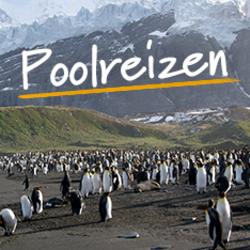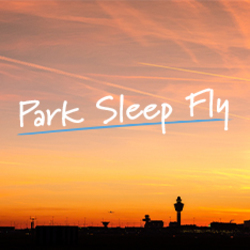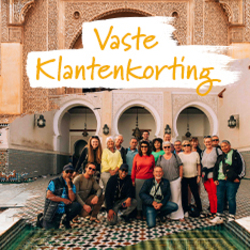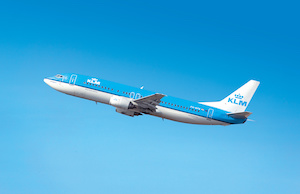-
1
Start Lima; optional walking tour of Lima's colonial centre.
Our trip starts in Lima today. The group flights usually arrive in the morning, and those on group flights will be met at the airport and transferred to the start hotel. Your leader will give a short welcome briefing either upon arrival to the hotel or later this evening. Time allowing, there is the option to take a walking tour of Lima's colonial centre this afternoon, replete with Spanish churches and colonial architecture.
-
2
Drive south to Paracas and sail to the wildlife-rich Ballestas Islands; on to Ica.
We drive south from Lima this morning until we reach the port of Paracas (4-5 hours). Here we take a boat to the Ballestas islands, a national park that contains one of the highest concentrations of marine birds in the world. There are sea lions, numerous species of birds and the Paracas Candelabra, a curious pre-Inca design on the hillside, only recognisable from the sea. The boat trip lasts around 2 hours, and once we're back on dry land we drive for around an hour to Ica, in the heart of Peru's wine-growing region.
-
3
To Nazca; visit Nazca Lines viewing platforms; optional scenic flight.
At the Huacachina oasis just outside Ica there are high sand dunes where we may have time to try 'sand-surfing' (optional). We arrive at Nazca in the afternoon with time to visit the viewing platforms close to the Nazca Lines. These are one of the world's great archaeological mysteries, consisting of enormous drawings and patterns etched in the desert sand. Afterwards, for those who wish there is usually time to do a scenic flight over the Nazca Lines (optional).
-
4
Turn inland away from the coastal desert, driving high into the Andes to Abancay.
We turn inland from the coastal desert today, climbing high into the Andes on today's long but spectacular drive. Vicuñas (a smaller wild relative of the llama) can be seen along this road, as this area is Peru's largest vicuña reserve. Flamingos are usually sighted at high Andean lakes near the road. This region has only recently become easily accessible to tourists due to an upgrade of the Abancay/Chalhuanca road. The altitude here can make physical exertion difficult, so it is recommended to rest in the evening after the 12-hour drive. We overnight a couple of hours beyond Abancay on the road to Cuzco.
-
5
Continue to Cuzco (3400m); afternoon free to acclimatise.
We set off towards Cuzco this morning, stopping to visit the unique Inca Saywiti stone and Tarawasi ruins. The glaciated summits of the Vilcabamba Mountain range and the descent into the Apurimac River valley demonstrate the dramatic contrasts of the Andes Mountains, and we should expect stunning scenery throughout today's 5-6 hour drive.
-
6
Free day in Cuzco to explore the many Inca ruins and Spanish churches.
The city has a multitude of attractions both in and around the city, both active and historical, and today is free to explore the city and its surroundings. An optional visit to the Sacred Valley of the Incas and the Pisac ruins is available, as is the option to try paddle-boarding on a high altitude lake on the plateau just outside the city.
-
7
Start Inca Trail trek from km82; walk along Urubamba River then climb to Huayllabamba.
This morning we transfer by bus to trailhead at Piscacucho, on the Vilcanota River. Our walk starts alongside the Vilcanota River beneath the impressive snowcapped Nevado Veronica, passing through cactus gardens and fields of corn to the enormous Inca ruins of Llactapata. Here, we turn up a side valley to camp near the hamlet of Huayllabamba.
-
8
Climb to the top of Dead Woman's Pass (4200m), then descend via old Inca steps to Pacaymayu.
This is the longest and most strenuous day. A long climb takes us first through an area of cloud forest to the meadows of Llulluchapampa, then over the Warmihuañusca (Dead Woman's) pass, at 4,215m the highest point on the trek. After quite a long, steep descent we camp in the scenic valley of the Pacamayo River (3600m).
-
9
Over Runcuray Pass (3800m) to ruins of Sayajmarca and Phuyupatamarca.
Another easier climb, past the ruins of Runquracay, takes us over the Runquracay Pass (3930m). From now on the Inca Trail becomes a clearly defined path made of flat boulders. We pass the ruins of Sayajmarca and suddenly enter rainforest; the trail passes at one point through an Inca tunnel. We camp at a quiet site on the ridge above the Inca ruins of Phuyupatamarca (3650m) to benefit from the views of sunset and sunrise.
-
10
Walk down Inca steps to Wiñay Wayna; the trek ends with the iconic view of Machu Picchu from the Sun Gate.
From the ridge we embark on the infamous Inca steps: a two kilometre stone staircase taking us rapidly downhill amid a panorama of overwhelming immensity, with the peaks of the Vilcabamba range above, and the river thousands of metres below. After visiting the attractive ruins of Wiñay Wayña, we have an undulating walk through cloud forest high above the river to Inti Punku, the Inca Gate of the Sun. From here we get our sudden first full sight of Machu Picchu itself, with Huayna Pichu rising behind. Skirting around the ruins, we exit the site and make our way to our hotel in Aguas Calientes (the town below Machu Picchu) for a well-earned rest and a shower.
-
11
Guided tour of Machu Picchu; return to Cuzco by train and by road.
We return early for a guided tour of the ruins at their quietest and most evocative (before the day trippers arrive from Cuzco). After additional free time to explore individually, we board the train in the afternoon (though its timings are somewhat erratic and the journey may be partly in the dark). The ride follows the rapids of the Urubamba River to Ollantaytambo in the Sacred Valley, from where we drive the remainder of the way to Cuzco.
-
12
Drive across the antiplano to Lake Titicaca (3800m), visiting Inca sites en route.
Today we travel for 8-10 hours along the Vilcanota River and onto the altiplano, the high plains separating the Andes from the jungle. Although it is quite a long drive, it is interesting and often spectacular. There are scheduled stops at interesting sites along the route to help break up the day and all along the route we get a feeling for the immensity of the Andean landscapes. This afternoon we arrive into Puno (3,800m) on the shores of Lake Titicaca.
-
13
Day trip to floating reed islands of Uros and Taquile.
A full day on the lake today as we visit both the island of Taquile and the floating islands of the Uros Indians. First we take a boat to Taquile, home to a community known for their remarkable weaving and traditional lifestyle. The panoramic views of the lake from the island are incredible, and it is often possible to see the snow-capped peaks of the Cordillera Real in the distance. After visiting the island, we return to Puno, stopping at one of the floating islands. The Uros have been living on rafts of reeds for centuries, and although many have now moved to the mainland there are still a couple of thousand who remain on the islands which are anchored close to Puno. A reasonable amount of their income is now provided by strictly regulated tourism, but they also still fish the lake and engage in barter with communities on the mainland in order to obtain essential daily items.
-
14
Transfer to Juliaca; fly to Lima.
Today we transfer to Juliaca Airport and fly back to Lima.
-
15
End Lima.
The tour ends after breakfast this morning.
Dé specialist in rondreizen sinds 1983
Internationale groepsreis Inca Trail, Titicaca & Nazca
Binnenkort boekbaar.
Ik blijf graag op de hoogte.

Bedankt, we houden je op de hoogte
Liever telefonisch contact met één van onze reisadviseurs? Neem contact met mij op.

Internationale groepsreis Inca Trail, Titicaca & Nazca
Discover Peru's deserts and high Andes and follow a classic trekking route
< Terug
naar resultaten



































